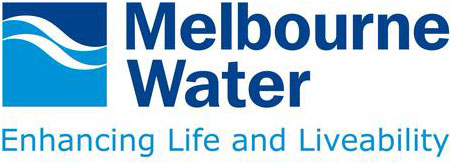resource library
Array
Kilmore Environmental Offsets
Goulburn Valley Water
Published: 14 December 2018
- Importance of exploring alternative and innovative options for managing recycled water
- Environmental offsets may be a cost-effective way of achieving improved environmental outcomes such as appropriate ecological state of waterways when compared to wastewater management facility expansions
- Strong regulatory and stakeholder management are essential when considering environmental offsets given that the stakeholders’ commitment and ability to comply with regulations can significantly influence the offset project outcomes
Project Overview
The Kilmore Environmental Offsets project is a multi-stakeholder collaboration that enables the Kilmore Wastewater Management Facility to commence recycled water discharge to the local waterways instead of the traditional reuse for irrigation. The facility is able to offset the increased pollutant and nutrient loads with particular offset works that restrict pollutant and nutrient flows into the waterways from other sources in the catchment.
Traditionally the Kilmore Wastewater Management Facility supplies and stores recycled water for irrigation purposes. Due to projected population growth, the facility would have to be augmented to treat and store more wastewater and recycled water. In order to comply with current EPA requirements, the winter storage’s capacity would need to be increased to hold the higher amount of recycled water, however expanding the facility involves high capital and running costs. Therefore, Goulburn Valley Water (GVW) assessed a number of alternative, cost effective options that would comply with EPA standards.
An offset scheme was considered as it would allow the facility to commence discharging recycled water to the creek instead of having to expand its current storage and irrigation capacity. In order to negate the impact of the discharge to water quality, the facility offset the increased nutrient and pollutant loads with environmental offset works, including gully rehabilitation, riparian fencing for stock exclusion and riparian vegetation, which target other sources of nutrient and pollutant loads within the catchment. The increased pollutant and nutrient discharge from the facility would therefore be counterbalanced by the improved environmental outcome of these offset works.
Drivers and Objectives
Due to the projected population growth, the amount of recycled water to manage is expected to increase from around 400 ML/yr to 1,000 ML/yr by 2040. As only limited properties are able to utilise the facility’s recycled water, this would require expanding the recycled water storage capacity of the facility which would be a very expensive solution. In order to explore other possibilities, GVW assessed and modelled seven shortlisted approaches according to feasibility, cost and risk related to stakeholders and regulators. Option 7, the proposed environmental offsets scheme, had the potential to be a cost-effective way to meet the increasing recycled water need while adequately managing environmental degradation.
Organisations
Key project partners:
- Goulburn Valley Water
- Goulburn Broken Catchment Management Authority
- EPA Victoria
Project Outcomes
The offset scheme was substantially less expensive than expanding the facility and would provide greater environmental and community benefits, that would not have eventuated had a traditional approach been implemented. This project is reliant on a number of stakeholders to implement the various offset activities, and so the project is exemplary in stakeholder engagement requiring strong multi-stakeholder collaboration and investment.
After a rigorous assessment of the alternative offsetting actions, the following three offset works were identified as offering the best potential to restrict nutrient movements from the catchment to the waterways: gully rehabilitation, riparian fencing for stock exclusion and riparian vegetation.
Lessons Learnt
- Robust strategic analysis gave confidence to the stakeholders that the selection process was sufficiently rigorous
- A collaborative approach was essential for the success of the offset scheme: GVW engaged EPA early in discussions, brought in outside experts, built partnerships with independent agencies,
- A robust process helped make the project a success: GVW conducted rigorous options analysis, completed an ecological risk assessment, developed an offsets implementation plan and monitoring program to provide EPA with evidence for success.
Project Cost
The cost benefit analysis showed a favorable business case.
Timeframe
The EPA approval period that GVW applied for is 10 years, split into two five-year periods aligned with the pricing submission cycles for the Essential Services Commission. This timeline allows EPA to review the performance after 10 years.
Acknowledgements
Regan Flanagan (Goulburn Valley Water)
